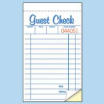Story behind the song
This is a song that explores the Partch Tonality Diamond. It starts on the overtone series of C, and then moves through a cycle of overtones on the undertone series. The main theme is in C major, with the notes C, D+ E, F++, G, A++, also known as 1:1, 9:8, 5:4, 11:8, 3:2, and 7:4, or 8:9:10:11:12:14. The cycle of overtones is then played on the undertones Ab (8:5), F (4:3), D++ (8:7), A# (16:9), and G-- (16:11). The 8:9:10:11:12:14 is played on each of the undertones. The bass accents the 3:2 and the 1:1 on each undertone.
The McGill University Master Samples are used for most sound sources, including Bassoon, Trombone, Flute, English Horn, Clarinet, Guitar, Piano, and French Horn. Some percussion and Acoustic Bass are also used from other samples.
The piece is realized using Csound. Some new Csound techniques used for the first time are glissandi, staggered start times, and up sampling. Glissandi are slides applied to some notes to move them up or down from one note to another. I use the glissando of the chord 4:5:6 to 7:9:11, very slow at first, and faster at other times. Csound can apply glissandi to a piano as easily as a trombone. The slide piano sounds kind of like a guitar, since the ear refuses to assume a piano can slide. Other glissandi are used to move from one undertone series to another. Each note has a different slide trajectory to allow them to arrive at the right time at the right note.
Some of the McGill samples don't necessarily begin sounding at the start of their sample. For example, the guitar samples include a few milliseconds at their start as the finger grabs the string before it is released. By asking Csound to start the note earlier than normal, I can include the "pre-note" sounds before the main sound starts.
I also stagger the percussion instruments randomly around their start time. While listening to a high school marching band once I noticed an intriguing sound as the drummers went in and out of phase. I duplicate this in Csound by having each percussion stroke played 5 times at random times around the real start time. The shape of the random bell curve around the intended start time is shifted from 0 to +- 10 milliseconds or so to simulate greater or lesser accuracy. It sounds cool.
Up sampling, and down sampling are techniques I use here to create intentional munchkinization. Munchkinization is the phenomenon of early sampler based synthesizers that used only a few sample notes to save RAM. As the keyboard player strayed up or down from the base note, the notes sounded more like miniature or giant versions of the instruments and less and less like the real musicians. A piano played an octave higher than normal sounds like a piano played at 2x speed on a tape recorder, like it's from Munchkin Land. The McGill samples include a note for every whole tone in the instrument's range, to minimize munchkinization. With Csound, I can deliberately move to a higher sample and take it down electronically for a mellower tone, or move to a lower sample and raise it up for a sharper tone. The piano in this piece moves all over the place, from normal to extreme munchkinization effects. It sometimes sounds like a toy piano, and sometimes like a conventional grand piano. Imagine a piano that could breathe helium, and slide up and down on demand. Or imagine a 12 inch long piano with slides for each note.
The title is taken from one the only phrases in Spanish the Americans in Ajijic learn when they move down from Brownsville at the end of the rainy season. Mostly they speak Spanglish to their kitchen and garden help. Spanglish is English words with "o" added to the end of some words, like "Eufrasia, por favor, please clean-o el bathroom-o." When they get to restaurants, the Americans tend to try for more authentic Spanish, "taco", "enchilada", "salsa", "tequilla" and of course, "la cuenta, por favor", which means "the check, please"

